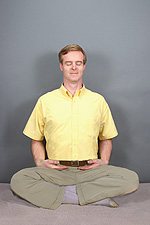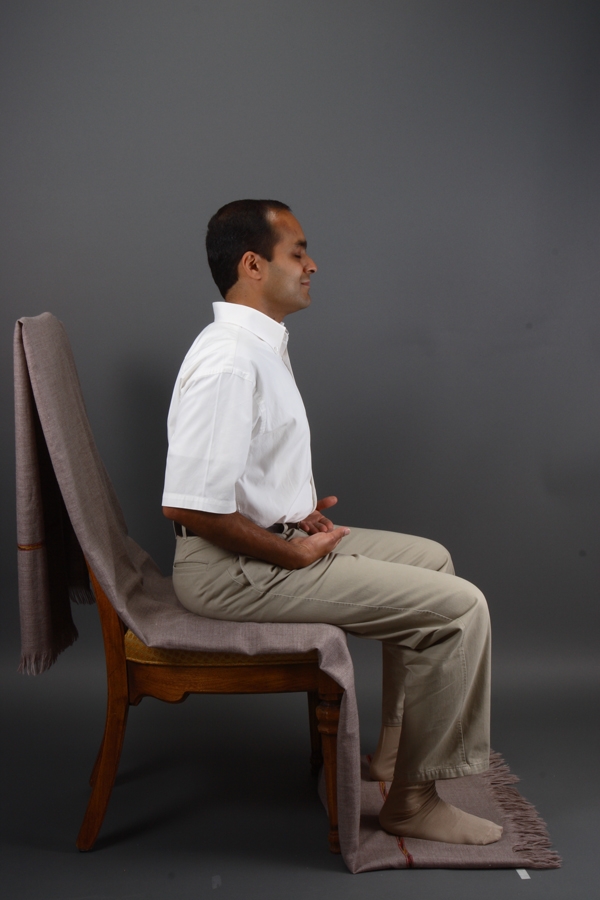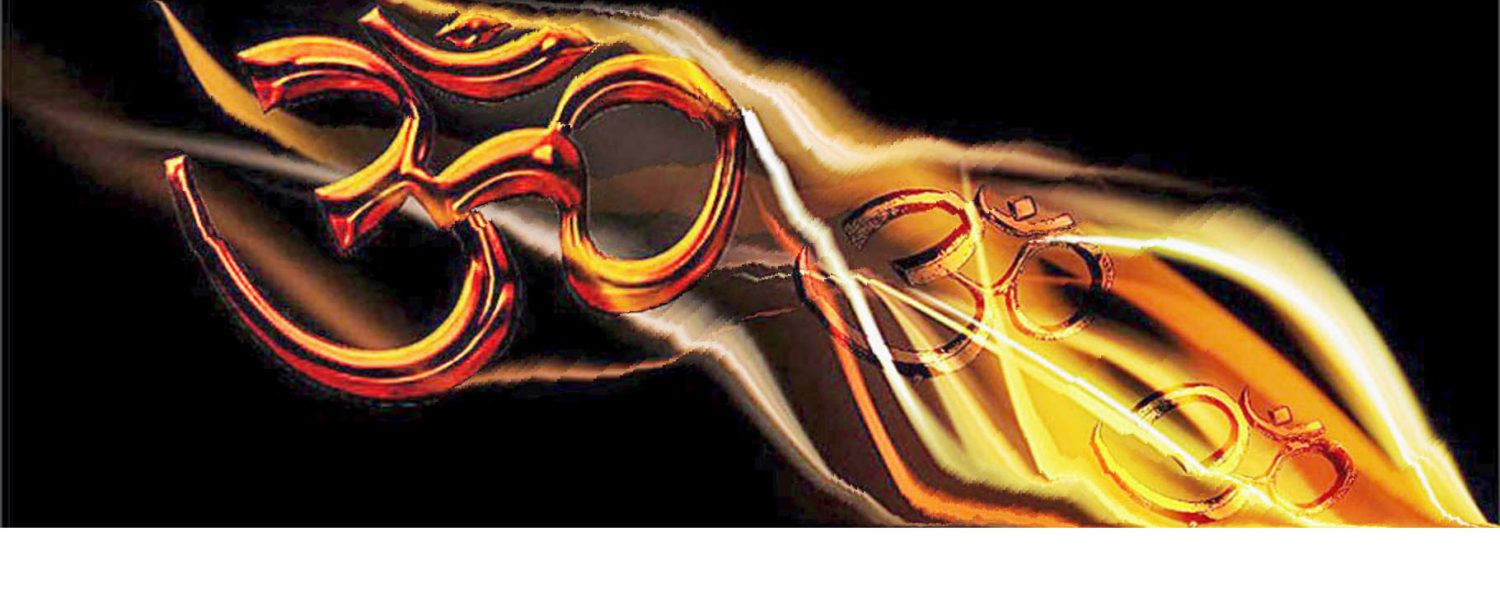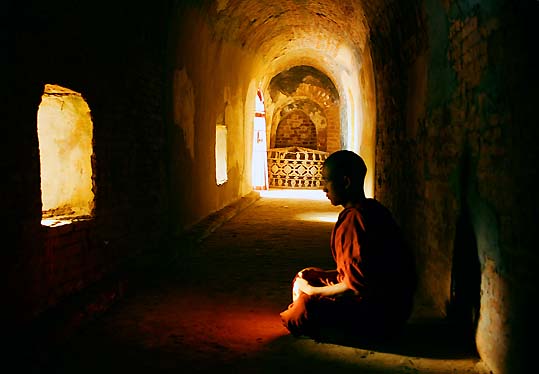Two Ways to get Real Bliss
Miss Umadevi, a Polish lady convert to Hinduism, asked Sri Bhagavan: I once before told Sri Bhagavan how I had a vision of Siva at about the time of my conversion to Hinduism. A similar experience recurred to me at Courtallam. These visions are momentary. But they are blissful. I want to know how they might be made permanent and continuous. Without Siva there is no life in what I see around me. I am so happy to think of Him. Please tell me how His vision may be everlasting to me.
M.: You speak of a vision of Siva. Vision is always of an object. That implies the existence of a subject. The value of the vision is the same as that of the seer. (That is to say, the nature of the vision is on the same plane as that of the seer.) Appearance implies disappearance also. Whatever appears must also disappear. A vision can never be eternal. But Siva is eternal.
The pratyaksha (vision) of Siva to the eye signifies the existence of the eyes to see; the buddhi (intellect) lying behind the sight; the seer behind the buddhi and the sight; and finally the Consciousness underlying the seer. This pratyaksha (vision) is not as real as one imagines it to be, because it is not intimate and inherent; it is not first-hand. It is the result of several successive phases of Consciousness. Of these, Consciousness alone does not vary. It is eternal. It is Siva. It is the Self.
The vision implies the seer. The seer cannot deny the existence of the Self. There is no moment when the Self as Consciousness does not exist; nor can the seer remain apart from Consciousness. This Consciousness is the eternal Being and the only Being. The seer cannot see himself. Does he deny his existence because he cannot see himself with the eyes as pratyaksha (in vision)? No! So, pratyaksha does not mean seeing, but BE-ing.
“To BE” is to realise – Hence I AM THAT I AM. I AM is Siva. Nothing else can be without Him. Everything has its being in Siva and because of Siva.
Therefore enquire “Who am I?” Sink deep within and abide as the Self. That is Siva as BE-ing. Do not expect to have visions of Him repeated. What is the difference between the objects you see and Siva? He is both the subject and the object. You cannot be without Siva. Siva is always realised here and now. If you think you have not realised Him it is wrong. This is the obstacle for realising Siva. Give up that thought also and realisation is there.
D.: Yes. But how shall I effect it as quickly as possible?
M.: This is the obstacle for realisation. Can there be the individual without Siva? Even now He is you. There is no question of time. If there be a moment of non-realisation, the question of realisation can arise. But as it is you cannot be without Him. He is already realised, ever realised and never non-realised.
Surrender to Him and abide by His will whether he appears or vanishes; await His pleasure. If you ask Him to do as you please, it is not surrender but command to Him. You cannot have Him obey you and yet think that you have surrendered. He knows what is best and when and how to do it. Leave everything entirely to Him. His is the burden: you have no longer any cares. All your cares are His. Such is surrender. This is bhakti.
Or, enquire to whom these questions arise. Dive deep in the Heart and remain as the Self. One of these two ways is open to the aspirant.
Sri Bhagavan also added: There is no being who is not conscious and therefore who is not Siva. Not only is he Siva but also all else of which he is aware or not aware. Yet he thinks in sheer ignorance that he sees the universe in diverse forms. But if he sees his Self he is not aware of his separateness from the universe; in fact his individuality and the other entities vanish although they persist in all their forms.
Siva is seen as the universe. But the seer does not see the background itself. Think of the man who sees only the cloth and not the cotton of which it is made; or of the man who sees the pictures moving on the screen in a cinema show and not the screen itself as the background; or again the man who sees the letters which he reads but not the paper on which they are written. The objects are thus Consciousness and forms. But the ordinary person sees the objects in the universe but not Siva in these forms. Siva is the Being assuming these forms and the Consciousness seeing them. That is to say, Siva is the background underlying both the subject and the object, and again Siva in Repose and Siva in Action, or Siva and Sakti, or the Lord and the Universe.
Whatever it is said to be, it is only Consciousness whether in repose or in action. Who is there that is not conscious? So, who is not realised? How then can questions arise doubting realisation or desiring it? If ‘I’ am not pratyaksha to me, I can then say that Siva is not pratyaksha.
These questions arise because you have limited the Self to the body, only then the ideas of within and without, of the subject and the object, arise. The objective visions have no intrinsic value. Even if they are everlasting they cannot satisfy the person. Uma has Siva always with Her. Both together form Ardhanariswara. Yet she wanted to know Siva in His true nature. She made tapas. In her dhyana she saw a bright light. She thought: “This cannot be Siva for it is within the compass of my vision. I am greater than this light.” So she resumed her tapas. Thoughts disappeared. Stillness prevailed. She then realised that BE-ing is Siva in His true nature.
Muruganar cited Appar’s stanza:- “To remove my darkness and give me light, Thy Grace must work through ME only.”
Sri Bhagavan mentioned Manickavachagar’s:
“We do bhajana and the rest. But we have not seen nor heard of those who had seen Thee.” One cannot see God and yet retain individuality. The seer and the seen unite into one Being. There is no cogniser, nor cognition, nor the cognised. All merge into One Supreme Siva only!
Talks with Ramana Maharshi
3rd February, 1938
Talk 450.












